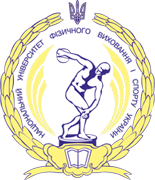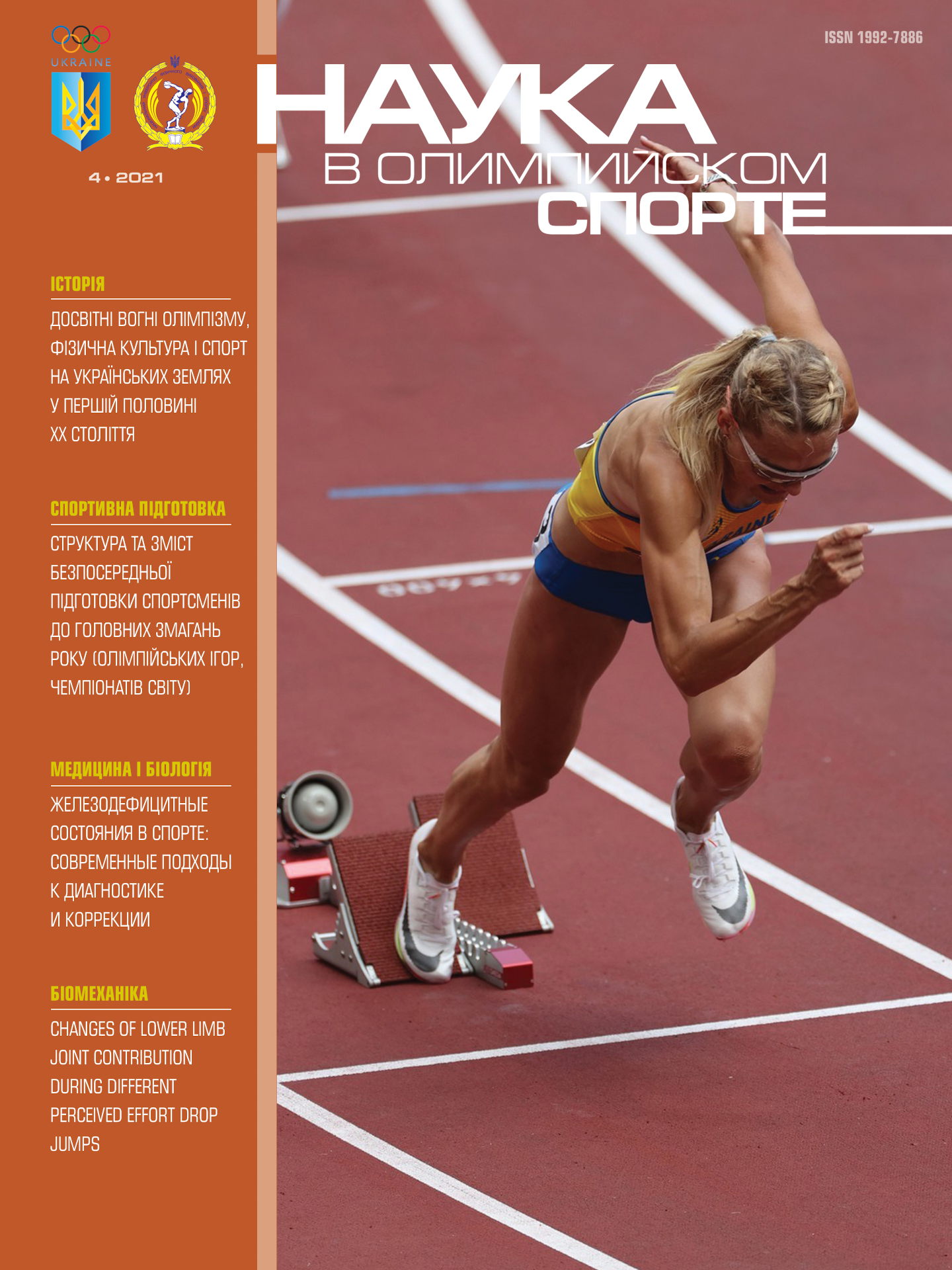Abstract:
Peculiarities of the neurodynamic response in elite wrestlers with different levels of stress tolerance Georgiy Korobeynikov, Lesia Korobeynikova, Victoria Mischenko
Objective. To study the manifestation patterns of neurodynamic response at different levels of stress tolerance in elite wrestlers.
Methods. The study involved 36 elite athletes aged 20-28 years, the members of Ukrainian national Greco-Roman wrestling team. To assess the level of stress tolerance, we used the "Stress test". To examine the neurodynamic response we studied the endurance of the nervous system, the speed of sensorimotor reactions, as well as the balance and mobility of nervous processes. All the techniques were part of the psycho-diagnostic complex «Multipsychometer-03".
Results. The presence of a connection between the functional mobility of nervous processes and stress tolerance in elite wrestlers predetermines the relationship between genetically determined factors of neurodynamic functions and the process of development of the psychological and emotional stability of an athlete in conditions of sporting activity. The obtained data demonstrated higher absolute values of the visual motor response time in wrestlers with a high level of stress tolerance that indicates a slowing of this response. Tolerance to stress does not affect the characteristics of speed visual response in the athletes. At the same time, the quality characteristics depend significantly on the ability to tolerate stress factors. In wrestlers with a high level of stress tolerance, there is a higher level of lability in the nervous system and the ability to reproduce a new motor action in conditions of development of cognitive skills. An increase in the threshold of stress tolerance contributes to optimization of the level of emotional stability of athletes due to the increased stress in the functional systems, as was clearly shown by the high rate of impulsiveness (premature response and increased inaccuracy) in executed actions.
Conclusions. Manifestation of a high level of stress tolerance in elite wrestlers is associated with the emotional stability and is accompanied with the mobilization of appropriate psycho-physiological resources.
Objective. To study the manifestation patterns of neurodynamic response at different levels of stress tolerance in elite wrestlers.
Methods. The study involved 36 elite athletes aged 20-28 years, the members of Ukrainian national Greco-Roman wrestling team. To assess the level of stress tolerance, we used the "Stress test". To examine the neurodynamic response we studied the endurance of the nervous system, the speed of sensorimotor reactions, as well as the balance and mobility of nervous processes. All the techniques were part of the psycho-diagnostic complex «Multipsychometer-03".
Results. The presence of a connection between the functional mobility of nervous processes and stress tolerance in elite wrestlers predetermines the relationship between genetically determined factors of neurodynamic functions and the process of development of the psychological and emotional stability of an athlete in conditions of sporting activity. The obtained data demonstrated higher absolute values of the visual motor response time in wrestlers with a high level of stress tolerance that indicates a slowing of this response. Tolerance to stress does not affect the characteristics of speed visual response in the athletes. At the same time, the quality characteristics depend significantly on the ability to tolerate stress factors. In wrestlers with a high level of stress tolerance, there is a higher level of lability in the nervous system and the ability to reproduce a new motor action in conditions of development of cognitive skills. An increase in the threshold of stress tolerance contributes to optimization of the level of emotional stability of athletes due to the increased stress in the functional systems, as was clearly shown by the high rate of impulsiveness (premature response and increased inaccuracy) in executed actions.
Conclusions. Manifestation of a high level of stress tolerance in elite wrestlers is associated with the emotional stability and is accompanied with the mobilization of appropriate psycho-physiological resources.
Аннотация:
Цель. Изучить характер проявления нейродинамического реагирования при различных уровнях стрессоустойчивости у борцов высокой квалификации.
Методы. В исследованиях принимали участие 36 спортсменов высокой квалификации 20-28 лет, членов сборной команды Украины по греко-римской борьбе. Для оценки уровня проявления стрессоустойчивости мы использовали «Стресс-тест». Нейродинамическое реагирование изучали по результатам исследования выносливости нервной системы, скорости сенсомоторных реакций, уравновешенности и подвижности нервных процессов. Все методики входили в психодиагностический комплекс «Мультипсихометр-03».
Результаты. Наличие связи функциональной подвижности нервных процессов со стрессоустойчивостью у борцов высокой квалификации предопределяет связь генетически обусловленных факторов нейродинамических функций с процессом формирования психоэмоциональной устойчивости спортсмена в условиях спортивной деятельности. Полученные данные свидетельствуют о более высоких абсолютных значениях латентного времени зрительно-моторной реакции у борцов с высоким уровнем стрессоустойчивости, что указывает на замедление данной реакции. Толерантность к стрессу не влияет на особенности скоростного зрительного реагирования спортсменов. В то же время качественные характеристики значительно зависят от способности к противостоянию стрессовым факторам. У борцов с высоким уровнем стрессоустойчивости наблюдается более высокий уровень лабильности нервной системы и возможности воспроизведения новых двигательных действий в условиях формирования когнитивных навыков. Увеличение порога стрессоустойчивости способствует оптимизации уровня эмоциональной стабильности спортсменов за счет роста напряжения в функциональных системах, о чем свидетельствует высокий показатель импульсивности (преждевременности ответа и возрастания неточности) в исполнительских действиях.
Заключение. Проявление высокого уровня стрессоустойчивости у борцов высокой квалификации связано с наличием эмоциональной стабильности и сопровождается мобилизацией соответствующих психофизиологических ресурсов.













